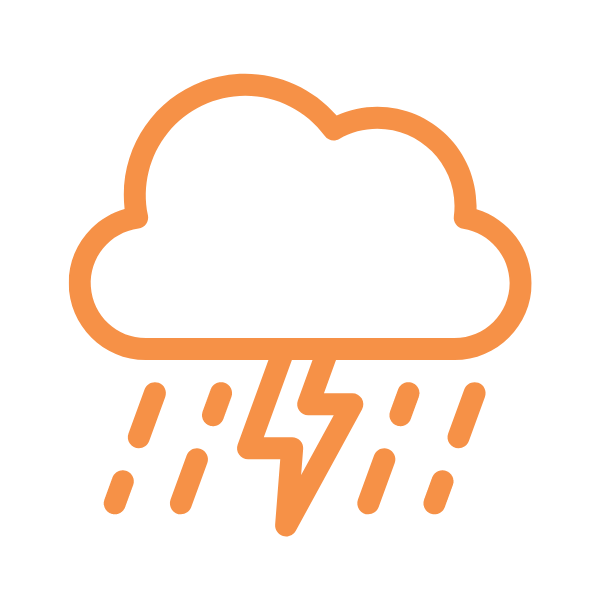What is thunderstorm asthma?
Thunderstorm asthma events are believed to be triggered by an uncommon combination of high rye grass pollen levels and a certain type of thunderstorm.
What causes thunderstorm asthma?

During a thunderstorm, when there are high grass pollen levels in the air:
- Pollen grains from rye are swept up in the wind and carried long distances.
- Some pollens can burst open and release tiny particles that are concentrated in the wind just before the thunderstorm.
- These small particles can travel deep into the airways and can trigger serious asthma symptoms, including severe breathing difficulty.
- When there is no thunderstorm, rye grass pollen particles are not small enough to travel down to the lungs and they stay in the nose causing symptoms of allergic rhinitis (hay fever).
- Thunderstorm asthma typically occurs in October and November in areas where rye grass pollen is present in large numbers, such as the south-eastern part of Australia.
Who is at risk of thunderstorm asthma?
People with poorly managed asthma have more severe thunderstorm asthma.
- Risk is highest in adults who are sensitive to rye grass pollen and have allergic rhinitis during spring and summer (with or without known asthma).
Thunderstorm asthma can occur even if you have never had asthma before.
What can I do to decrease my risk of thunderstorm asthma?
- If you have asthma, allergic rhinitis, or both, see your doctor to discuss options for protecting yourself during thunderstorm season.
Checklist for avoiding thunderstorm asthma
- If you have asthma or allergic rhinitis caused by rye grass pollen, you could be at risk of sudden severe asthma caused by a thunderstorm. This can occur even if you have not had asthma before.
- People with poorly controlled asthma have more severe thunderstorm asthma. If you have asthma or allergic rhinitis, see your doctor to discuss how to protect yourself during the thunderstorm season (from September or October to December in Australia).
- Always carry an asthma reliever puffer with you if you have allergic asthma or allergic rhinitis caused by rye grass pollen – even if you have not had asthma before.
- Always use a spacer when taking your asthma puffer medications.
- Use your recommended intranasal corticosteroids (INCS) daily to control your allergic rhinitis symptoms if you are allergic to rye grass pollen.
- If your doctor has prescribed an asthma preventer, use it as advised.
- Monitor the pollen levels in your area and be aware of any forecast storms.
- Make sure you have an up-to-date ASCIA Allergic Rhinitis Treatment Plan and an Asthma Action Plan.
- Avoid being outdoors before, during and just after thunderstorms. Move inside a building or car with the windows shut and switch the air conditioner to recirculate/recycled air. Wait until the storm has passed and it is no longer windy before opening doors or windows, or going outside.
